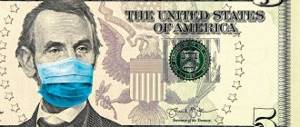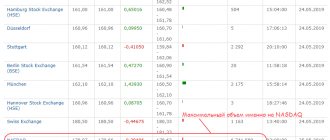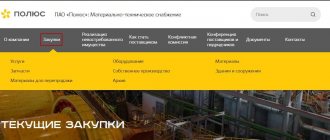The Shanghai Exchange (SSE) is one of two regularly operating and organized securities and derivatives markets in the People's Republic of China. The second trading platform is located in Shenzhen. The Shanghai Exchange is the world's fifth largest securities market by total capitalization. In May 2015, this figure was US$5.5 trillion. Unlike the Hong Kong exchange, the Shanghai exchange is not completely open to foreign investors due to strict capital controls imposed by the mainland Chinese authorities.
brief information
Let's consider the main parameters of this organized securities trading platform:
- Type – stock exchange.
- Location: Shanghai city in China.
- Founded in 1990, November 26.
- Key figures: Jeng Liang (Chairman), Zhang Yujun (President).
- Currency – Yuan (RMB).
- Number of listings – 1041 (as of May 2015).
- Volume – 0.5 trillion US dollars (December 2009).
- Indicators – an index called SSE Composite and its derivatives.
Purpose and place
The Shanghai Stock Exchange was opened in 1990 and began operating within three weeks. It is a non-profit organization administered through the China Securities Regulatory Commission (CSRC). The Shanghai Stock Exchange ensures secure interaction between financial entities and efficient clearing. It is also the international equivalent of interdepartmental communication and cooperation. The Shanghai Exchange is responsible for centralized clearing of foreign exchange in the interbank market, including margin and collateral management, information and consulting management.
How the auction works
A special feature of the Shanghai Stock Exchange is a long break of one and a half hours between the main trading sessions. As a result, the overall duration of Shanghai's securities buying and selling operations is shorter than that of other securities institutions.
The trading platform has two listings of securities, the first of which is sold only in yuan, and the second in dollars. These restrictions are still present on Chinese exchanges due to the desire of the Chinese Communist Party to regulate the commercial activities of not only its own companies, but also foreign ones in its market.
Shanghai trading offers stocks and bonds issued by Chinese issuers, as well as index contracts.
Participants
Options:
- Trading can be done through Chinese brokers registered on the stock exchange. They act as market makers for companies that they participated in listing on the SSE.
- Foreign brokers trade through Chinese partners.
Most likely, restrictions imposed by the Chinese government and making it difficult for foreigners to have direct access to trading lead to the fact that the Shanghai stock trading platform is not very popular in the world. The vast majority of investors and speculators here are Chinese.
History of creation
The formation of a system of international payments in Shanghai was the result of the Nanking Agreement concluded in 1842. It was its signing that ensured the end of the first Opium War. The history of the securities market in China began in the late 1860s. During the boom in mining stocks, foreign businessmen founded the Shanghai Stock Brokers Association. In 1904 it was renamed the stock exchange. The supply of securities at that time was primarily provided by local companies. Since 1895, Japan and some other states that had treaties with China received the right to establish their factories in Shanghai and other ports. Rubber plantations became a staple of stock trading at the end of the 20th century.
By the late 1930s, Shanghai had emerged as the financial center of the Far East, where Chinese and foreign investors could trade stocks, government and corporate bonds, and futures. The operation of the exchange came to an abrupt halt when the territory of the state was occupied by Japanese troops on December 8, 1941. However, after five years it completely restored its activities. Three years later, the Shanghai Stock Exchange closed again due to the communist revolution in China. It opened only 32 years later. This became possible thanks to the Cultural Revolution and the rise to power of Deng Xiaoping. Throughout the 1980s, China's securities market developed against the backdrop of economic reforms that signaled a gradual transition from a socialist to a market-based economic system. In its modern form, the Shanghai Stock Exchange began operating on December 19, 1990.
Trading instruments
In May 1999, the exchange began trading futures for copper, aluminum and rubber. Today SHFE is the largest metals exchange in Asia and competes with the London Metal Exchange.
SHFE is consistently committed to expanding its range of financial instruments. In August 2004, fuel oil futures were added, and in March 2007, zinc futures were added. That same year, the exchange received permission to trade gold futures contracts, which it launched in January 2008. Since May 2012, night trading of gold and silver futures has been carried out, and in March 2011, lead futures appeared.
The Shanghai Exchange is an electronic trading platform , which allows it to successfully implement the strategy of expanding its range by adding various metals, energy resources and chemical products. In 2007, futures for rapeseed oil and low-density polyethylene appeared here.
In March 2009, steel wire contracts were launched and, along with rebar contracts, are one of SHFE's core products today. In June 2014, plans were announced to launch China's first nickel futures that same year.
In March 2021, SHFE, through its subsidiary Shanghai International Energy Exchange, began trading crude oil futures, which became the world's first oil derivatives denominated in Chinese yuan.
Structure
Securities traded on the Shanghai Exchange are divided into three categories: bonds, shares and funds. The first consists of treasury, corporate and convertible bonds. There are two types of shares: “A” and “B”. The nominal value of the former is expressed in yuan, the latter in US dollars. Initially, A shares could only be issued by national firms. However, since December 2002, foreign investors have been allowed to trade them, albeit with restrictions. In 2003, a program called “Qualified Foreign Institutional Investors” was launched. Currently, 98 foreign entities have been admitted, with a market entry quota of US$30 billion. There are plans to combine both types of shares in the future.
"Made in China": what's the point?
2 gold tiger figures
The new Made in China program is undoubtedly attracting the attention of both leading precious metals investors and industry analysts. Undoubtedly, the very fact of the Shanghai Exchange reaching a new level of development cannot but affect the basic principles of trading in precious metals in the world, as well as the pricing policy of the market.
Did you know that the new company will use tax incentives to encourage businesses to upgrade their equipment and increase R&D efforts to improve the manufacturing industry.
Companies that purchased new R&D equipment after January 1 of the current year or that have a small amount of fixed assets will be eligible to receive a so-called tax credit. This decision was made by the Cabinet, chaired by Prime Minister Li Keqia.
Operating mode
The Shanghai Stock Exchange operates from Monday to Friday. The morning session begins with centralized pricing from 9:15 to 9:25. Trading takes place from 9:30 to 11:30 and from 13:00 to 15:00. The exchange is closed on Saturdays and Sundays, other weekends are announced in advance. Major holidays include: International and Chinese New Year, Qingming, Duanwu and Mid-Autumn Festival, Labor Day, National Day.
Listing Requirements
The rules for placing shares on the stock exchange are regulated in China by two laws: “On Securities” and “On Companies”. The list of requirements for shares for listing includes the following items:
- Shares must be issued to the public after approval by the State Department of Securities Administration.
- Their total nominal value should not be less than 30 million yuan.
- For the past three years, the company must have ended the financial year with a surplus. In this case, the state can own no more than 75% of the shares (if the total nominal value exceeds 400 million US dollars, then 85% is allowed).
- The company must not have been involved in illegal activities or falsifying accounting records within the last three years.
Other conditions stipulated by the State Council include the following restrictions:
- At the moment, China gives preference to domestic firms that want to list their shares on the stock exchange. Similar restrictions apply, for example, in India.
- Companies that engage in new technologies are approved separately by the State Council.
Shanghai Stock Exchange: quotes
The SSE Composite is the main indicator of the functioning of the Chinese securities market. It is calculated based on the Paasche weighted composite price index. This means that the Shanghai Stock Exchange index is based on a specific day. This date is December 19, 1990. The basis is the market capitalization of all shares on that day. The base index value is 100 points. Its calculation has been carried out since July 15, 1991. The SSE Composite Index is equal to the current market capitalization of all shares multiplied by the underlying value. Its peak value was recorded on July 6, 2015 – 5166.35. The crash of the Shanghai Stock Exchange occurred shortly thereafter. Just a month and a half later, on August 22, 2015, the mentioned figure amounted to 3509.98 units. Exchange quotes decreased by 1.5 times. Other important indices of the Shanghai Stock Exchange are the SSE 50 and SSE 180. On November 23, 2015, the indicator was 3610.31; compared to the previous day, stock quotes fell by 0.56 points.
The Shanghai Stock Exchange is one of two securities trading platforms in China. The state continues to closely monitor it. Its situation is assessed using the SSE Composite index, as well as a number of indicators based on it.
An example of trading non-ferrous metals on the stock exchange
Next, you will see a simple but effective trend strategy (works not only for the non-ferrous metals market) using the example of copper.
Timeframe M30. First, let's determine the current trend boundary. On the chart we see an upward trend. To determine the boundary, you need to find the extreme minimum between the last two maximum points. Let's put a green line there.
We expect a breakout of the border by more than 10 points (closing price). After the structure appears, we move the GT to the closing price of the last low of the upward trend.
We count the area 10 points from the closing price and wait for the area to approach. When the price enters it, we open a sale. We set a stop loss at the closing price of -5 pips.
We set take profit at a distance of 30 points.
Forecast for the coming years
Most London Stock Exchange assets are in a downward trend. Dow's Law states that a trend is more likely to continue than reverse, so base metal prices are expected to fall. However, any forecasts are just a probability (like trading in general). Blindly following analysts' forecasts is the path to 0 on deposit.











